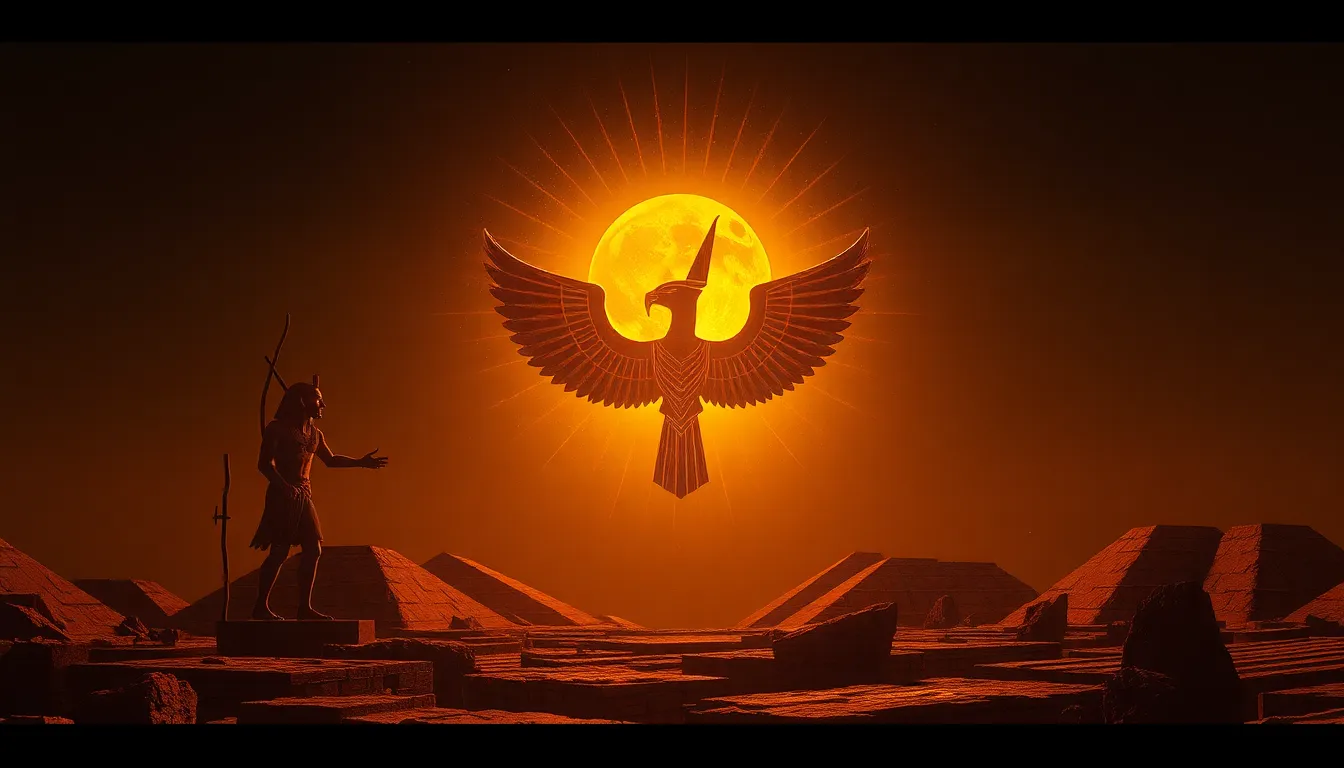The Role of the Sun God Ra in Tomb Texts
I. Introduction
Ancient Egyptian beliefs revolved around a complex pantheon of gods and goddesses, each playing a crucial role in the cosmos and human existence. Among these deities, Ra, the sun god, held a position of unparalleled significance, embodying the principles of creation, life, and the afterlife. To gain insight into these religious practices, tomb texts serve as a vital resource, providing a window into the spiritual beliefs and rituals that shaped the Ancient Egyptian worldview.
Ra’s prominence as a central deity in these texts reveals not only his importance in daily life but also his critical function in the afterlife journey of the deceased, as he guided souls through the trials of the underworld and into eternal existence.
II. Historical Context of Tomb Texts
Tomb texts, often inscribed on the walls of burial chambers or written on coffins, were designed to assist the deceased in their journey to the afterlife. They served both protective and instructional purposes, ensuring the departed would navigate the challenges they faced beyond death.
Throughout the various dynasties of Ancient Egypt, tomb texts evolved significantly. Initially, these texts were simple inscriptions; however, as time progressed, they became more elaborate, reflecting the changing beliefs and practices surrounding death and the afterlife.
The afterlife held immense significance within Ancient Egyptian culture, as it was believed that one’s earthly deeds directly affected their fate beyond death. This belief system laid the foundation for the rich tapestry of funerary texts and rituals that accompanied the deceased.
III. The Mythology of Ra
Ra is characterized by his radiant nature, often depicted as a falcon-headed man crowned with a sun disk. He symbolizes light, warmth, and growth, embodying the life-giving power of the sun.
In Egyptian creation myths, Ra was often credited with the creation of the world. He emerged from the primordial waters of Nun, and through his words, he brought forth life and order. This act of creation established him as a fundamental figure in the pantheon of gods.
Ra is closely linked with several other deities, including:
- Osiris: God of the afterlife and resurrection.
- Isis: Goddess of magic and motherhood.
- Horus: The sky god, often associated with kingship and protection.
IV. Ra’s Representation in Tomb Texts
Ra appears prominently in key tomb texts such as the Pyramid Texts and Coffin Texts. These texts often incorporate hymns, prayers, and spells intended to invoke Ra’s favor and protection for the deceased.
Variations in the depictions of Ra can be seen across different texts, reflecting regional differences and evolving theological perspectives. While some texts emphasize his role as a creator, others focus on his function as a protector of the dead.
The iconography associated with Ra is rich and diverse, featuring:
- The sun disk, often encircled by a serpent.
- The falcon, symbolizing his association with the sky.
- Hieroglyphs depicting rays of light, representing his life-giving energy.
V. Theological Significance of Ra in the Afterlife
In the context of the afterlife, Ra played a pivotal role in the journey of the deceased. He was believed to guide souls through the Duat (the underworld) and assist them in overcoming the challenges they encountered.
The concept of solar rebirth and resurrection is central to Ra’s mythology. Each day, as the sun rises, it is seen as a symbol of the deceased’s rebirth into the afterlife. This cyclical nature of life and death reinforces the belief in immortality.
Ra was also integral to the judgment of souls, where the heart of the deceased was weighed against the feather of Ma’at, the goddess of truth and justice. This process determined whether the soul would ascend to the afterlife or be devoured by Ammit, the soul-eater.
VI. Rituals and Offerings to Ra in Tomb Practices
Common rituals associated with Ra in tombs included daily offerings, prayers, and ceremonies aimed at ensuring the sun god’s favor. These rituals were essential for the deceased’s successful transition into the afterlife.
Offerings made to Ra often included:
- Food and drink.
- Incense and perfumes.
- Symbolic items representing the sun and light.
The architectural design of tombs also reflected solar worship, with many structures oriented to align with the rising sun, emphasizing the connection between the physical space and the divine realm of Ra.
VII. Case Studies: Notable Tombs and Their Texts
Several notable tombs provide rich insights into the relationship between Ra and the deceased. For instance, the tomb of Tutankhamun features inscriptions that invoke Ra’s protection and blessings for the young pharaoh in his journey to the afterlife.
Similarly, the tomb of Seti I is adorned with elaborate representations of Ra, emphasizing his role in the afterlife and the king’s divine status. The inscriptions within these tombs reveal the personal beliefs and aspirations of the deceased, highlighting their desire for eternal life under Ra’s watchful eye.
VIII. Conclusion
The multifaceted role of Ra in tomb texts underscores his significance in Ancient Egyptian spirituality. As a symbol of life, creation, and resurrection, Ra’s presence in funerary texts reflects the deep reverence the Egyptians held for the sun god.
Ra’s enduring legacy continues to influence modern understandings of Egyptian mythology, illuminating the intricate beliefs surrounding death, the afterlife, and the divine. The portrayal of Ra in tomb texts not only enriches our comprehension of Ancient Egyptian religion but also invites a reflection on the universal quest for immortality and meaning beyond this life.




